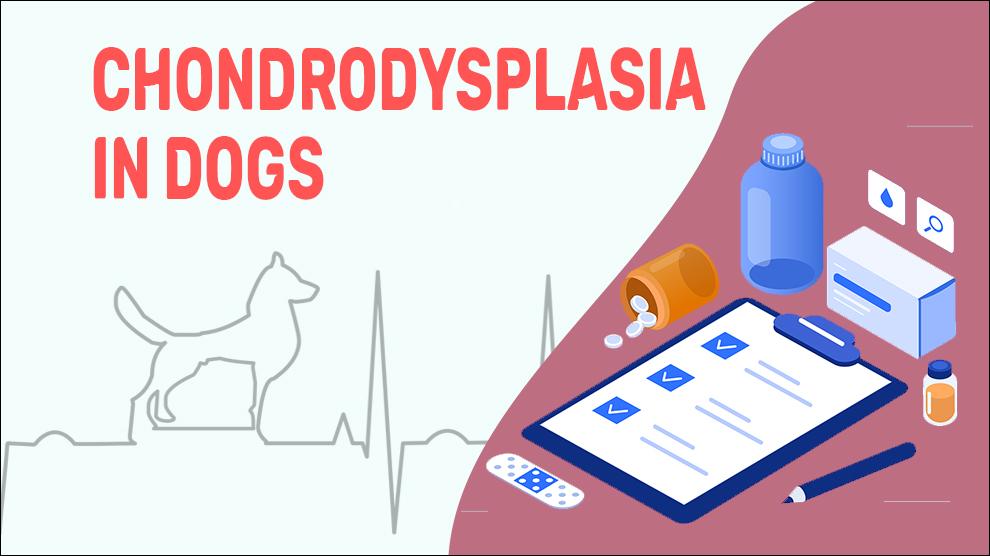Chondrodysplasias also referred to as canine dwarfism, are recessive genetic bone and cartilage disorders characterized by abnormal body proportions and dwarfism.
"Chondrodysplasia" can be a mouthful, break it into simpler terms for easier understanding, "Chondro" indicates cartilage, and "dysplasia" refers to the “development of tissues, cells or organs that is not normal”. One of the distinguishing traits of a dog with chondrodysplasia is ‘Short limbs’ as the dog's bones don't grow to their potential size.
Prefix an "osteo" (meaning: bone), in front of chondrodysplasia and the term gets broader ‘osteochondrodysplasia’ and it means ‘malformed bone and cartilage development. Chondrodysplasia is also called achondroplasia and skeletal dysplasias.
We cannot expect a dachshund or basset hound to be a "high rider" – they are always long-bodied, short-legged dogs. On the other hand, it's a different story if your German shepherd doesn't gain height as he grows.
Symptoms Of Chondrodysplasia
- Short legs and Large head
- Bulging eyes, Smaller nose
- Shorter jaw - Underbite and crooked teeth.
- Sticking out tongue
- Slow growth (with respect to other dogs of the same age and breed).
- Curved spine
- Deformed bones
- Feet turned outward / Bowed legs (mostly front legs).
- Retinal dysplasia - Trouble seeing or bumping into things.
- Inflammation of joints.
- Weight gain
- Stridor - Noisy breathing.
- Rigidity / Stiffness
- Excessive panting
- Prominent skin folds
Treatment Options For Chondrodysplasia
For Mild Cases:
Physical therapy, pain medication, chondroprotective agents (such as glucosamine), and making sure the affected dogs do not become overweight.
In severe cases: Surgery is inevitable to lengthen the bones in your dog’s legs. Unfortunately, most of these procedures are complicated and Recovery is painful. Most vets do not suggest such surgeries.
Hormone Replacement Therapy: The usage of growth hormones (especially progestin) is found to be effective.
Home Remedies For Chondrodysplasia
- Home-prepared diets is good for chondrodysplasic dogs than dry and canned dog foods.
- Pasture-raised, organically produced ingredients ensure that your dog will not consume drug residues and pesticides.
- Avoid using chemicals, Topical Pesticides, and ‘possible’ carcinogens in areas accessible to pets.
- Ensure your dog is getting enough exercise.
Prevention Of Chondrodysplasia
Chondrodysplasia etiology is poorly understood. Specific causes are not yet known. However, Hereditary is, perhaps a factor in some breeds and it is better to evaluate the affected dogs before breeding or at least before getting a dog from a susceptible lineage.
Affected Breeds Of Chondrodysplasia
English Pointer, Beagle, Shih Tzu, Japanese Spaniel, Cavalier King Charles Spaniel, Pekingese, Pug, Boston Terrier, German Shepherd, Bulldog, Norwegian Elkhound, Scottish Deerhound, Basset Hound, Labrador Retriever, Great Pyrenee, Pembroke Welsh Corgi, Alaskan Malamute, Samoyed, Cocker Spaniel, Scottish Terrier, Shih Tzu, Senior Dogs
Additional Facts For Chondrodysplasia
- Cause:
- Congenital
- Cardiovascular Defects
- Diabetes Mellitus
- Glycogen Storage Disease
- Hypoadrenocorticism / Hyperadrenocorticism
- Hydrocephalus
- Hypothyroidism
- Hypopituitarism
- Kidney Disease
- Malnutrition
- Portosystemic Shunts
- Skeletal Dysplasia
- Types:
- Osteochondrodysplasia: Stunted growth and complete a lack of normal bone deformity.
- Achondroplasia: Lack of bone growth when compared to other dogs of the same age and the same breed.
- Mortality:
Congenital deformities are from birth or present themselves from puppyhood. Typically Acquired Chondrodysplasias occur later in life and hardly ever need treatment. The mortality rate is almost zero.
- Diagnosis:
- Bloodwork to check for hormonal conditions.
- Radiographs to look at the bones and joints.
- Orthopedic exam to check for joint pain or problems.
- Magnetic Resonance Imaging (MRI).
- Arthrograms
- Prognosis:
Veterinarians usually give suggestions for control or management of the problem since there is no proper cure.
Chondrodysplasia has a guarded prognosis.
Dogs that receive early diagnosis and appropriate treatment have a better prognosis than dogs with chronic conditions.
When To See A Vet
Contact your vet right away, if you notice:
- Short legs and Large head
- Bulging eyes, Smaller nose
- Shorter jaw - Underbite and crooked teeth.
Food Suggestions For Chondrodysplasia
- Beef, fish like tuna, and dairy products - milk and cheeses.
- Plant-based protein sources - Lentils, Chickpeas, Potatoes, other Nuts, and Seeds.
- Calcium-fortified foods and beverages.
- Milk and milk products, such as yogurt and cheese.
- Vitamin D: Liver, Fish, Egg yolks, Beef.
- Cooked spinach and potatoes.
- Raw meaty bones, raw chicken wings, or lamb flaps.
Conclusion
For a condition like chondrodysplasia, don’t skip a wellness examination, your dog’s yearly veterinary check-up is not something to be missed.
Try to get your pups to a vet monthly to monitor their growth and look after mischief-makers.
In most cases, the veterinarian recommends physiotherapy to restore range of motion and strengthen the muscles.

















